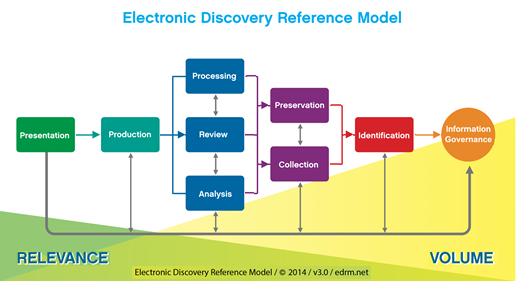Want a Definition of “Possession, Custody, or Control” of ESI? Look to The Sedona Conference: eDiscovery Best Practices

Hard to believe that we’re just now getting around to covering it, but The Sedona Conference® released a new commentary back in April. This guide strives to provide guidance to defining the phrase “possession, custody, or control” as it’s used in Federal Rules 34 and 45.
Rule 26(a) of the Federal Rules of Civil Procedure allows for the discovery of “documents, electronically stored information, and tangible things” in the responding party’s “possession, custody, or control.” Similarly, Rule 34(a) and Rule 45(a) obligate a party responding to a document request or subpoena to produce “documents, electronically stored information, and tangible things” in that party’s possession, custody, or control. However, nowhere does the Rules provide any definition of the phrase “possession, custody, or control”, requiring parties to look to case law for a definition. Unfortunately, the case law has proved to be unclear and inconsistent in providing such a definition. In addition, determining whether ESI should be considered to be in a responding party’s “possession, custody, or control” has become more complex, with the growing popularity of technologies and trends such as social media and cloud computing.
The public comment version of The Sedona Conference Commentary on Rule 34 and Rule 45 Possession, Custody, or Control was released in April to provide practical, uniform and defensible guidelines regarding when a responding party should be deemed to have “possession, custody, or control” of documents and all forms of electronically stored information (ESI) subject to Rule 34 and Rule 45 requests for production. A secondary purpose of the Commentary is to advocate abolishing use of the common-law “practical ability test” for purposes of determining Rule 34 and Rule 45 “control” of ESI, which has led to “inequitable” situations in which courts have held that a party has Rule 34 “control” of Documents and ESI even though the party did not have the actual ability to obtain the Documents and ESI.
The guide begins with a one-page Abstract that briefly describes the issue and the goal of the commentary, followed by a one-page list of the actual principles. They are:
- Principle 1: A responding party will be deemed to be in Rule 34 or Rule 45 “possession, custody, or control” of Documents and ESI when that party has actual possession or the legal right to obtain and produce the Documents and ESI on demand.
- Principle 2: The party opposing the preservation or production of specifically requested Documents and ESI claimed to be outside its control, generally bears the burden of proving that it does not have actual possession or the legal right to obtain the requested Documents and ESI.
- Principle 3(a): When a challenge is raised about whether a responding party has Rule 34 or Rule 45 “possession, custody, or control” over Documents and ESI, the Court should apply modified “business judgment rule” factors that, if met, would allow certain, rebuttable presumptions in favor of the responding party.
- Principle 3(b): In order to overcome the presumptions of the modified business judgment rule, the requesting party bears the burden to show that the responding party’s decisions concerning the location, format, media, hosting and access to Documents and ESI lacked a good faith basis and were not reasonably related to the responding party’s legitimate business interests.
- Principle 4: Rule 34 and Rule 45 notions of “possession, custody, or control” should never be construed to trump conflicting state or federal privacy or other statutory obligations.
- Principle 5: If a party responding to a specifically tailored request for Documents or ESI (either prior to or during litigation), does not have actual possession or the legal right to obtain the Documents or ESI that are specifically requested by their adversary because they are in the “possession, custody, or control” of a third party, it should, in a reasonably timely manner, so notify the requesting party to enable the requesting party to obtain the Documents or ESI from the third party. If the responding party so notifies the requesting party, absent extraordinary circumstances, the responding party should not be sanctioned or otherwise held liable for the third party’s failure to preserve the Documents or ESI.
The remainder of the guide covers 1) the background that led to the new principles, including inconsistent interpretations of “possession, custody, or control” within the Rules, shortcomings of the “practical ability test” and effect of new technologies on the analysis and 2) a detailed look at each of the new principles. There is also an Appendix with a lengthy spreadsheet of cases where “possession, custody, or control” was at issue.
As usual, the Commentary is free and can be downloaded here. As this is the public comment version, you can submit comments to info@sedonaconference.org, or fax(!) them to 602-258-2499.
So, what do you think? Will these new principles lead to a consistent application of “possession, custody, or control” within the courts? Please share any comments you might have or if you’d like to know more about a particular topic.
Disclaimer: The views represented herein are exclusively the views of the author, and do not necessarily represent the views held by CloudNine. eDiscovery Daily is made available by CloudNine solely for educational purposes to provide general information about general eDiscovery principles and not to provide specific legal advice applicable to any particular circumstance. eDiscovery Daily should not be used as a substitute for competent legal advice from a lawyer you have retained and who has agreed to represent you.






